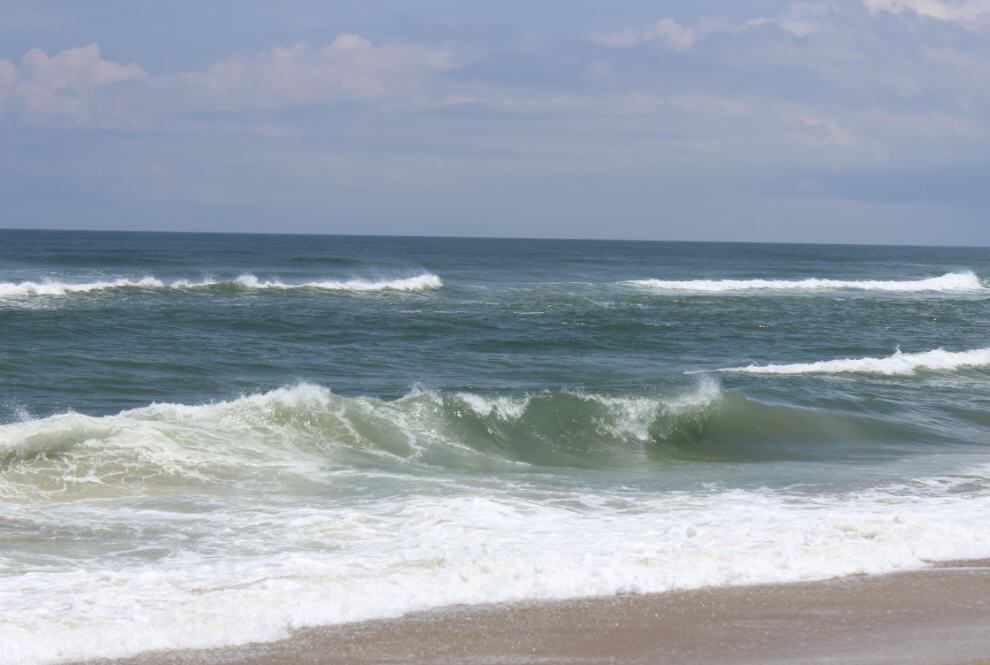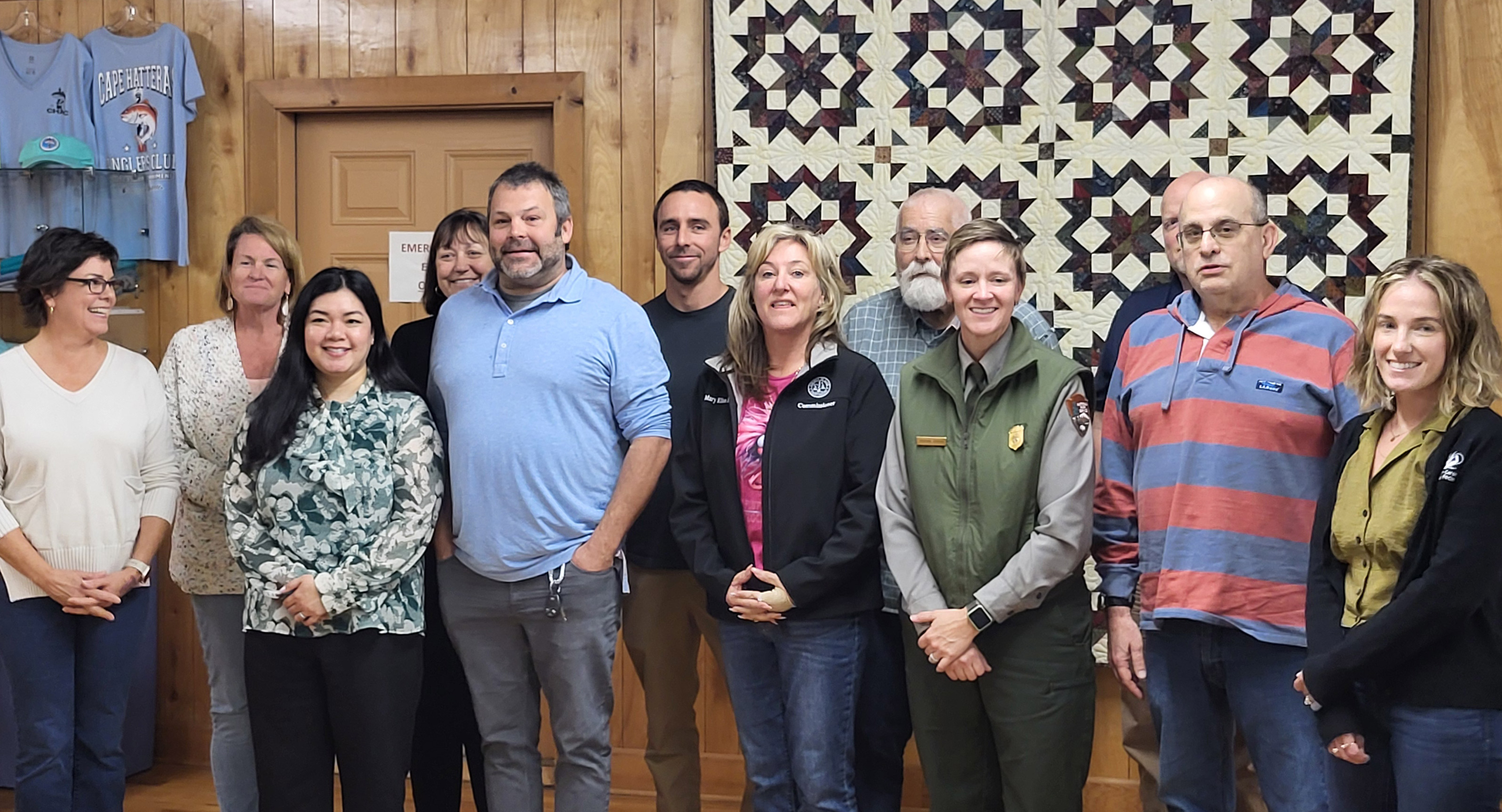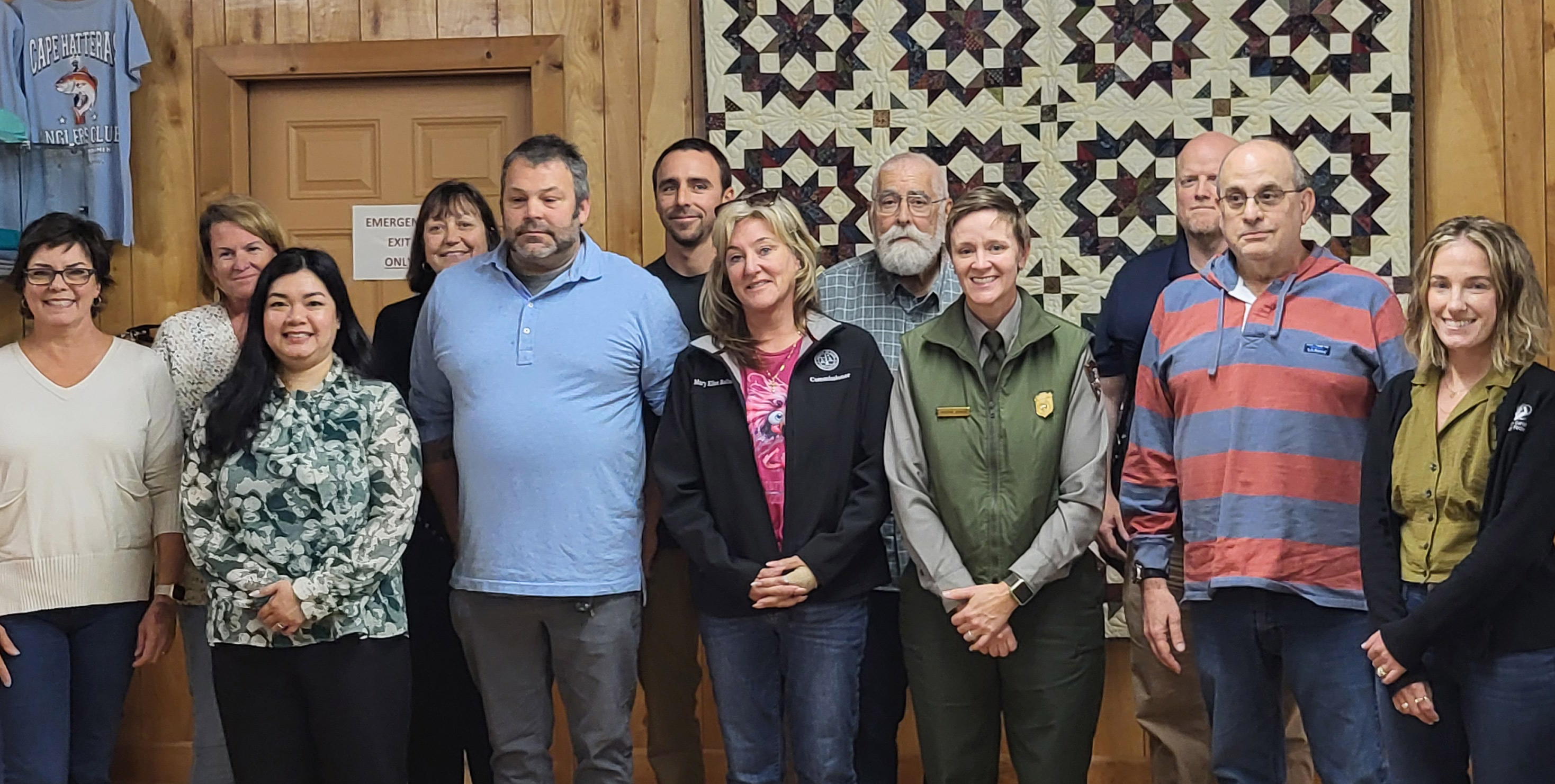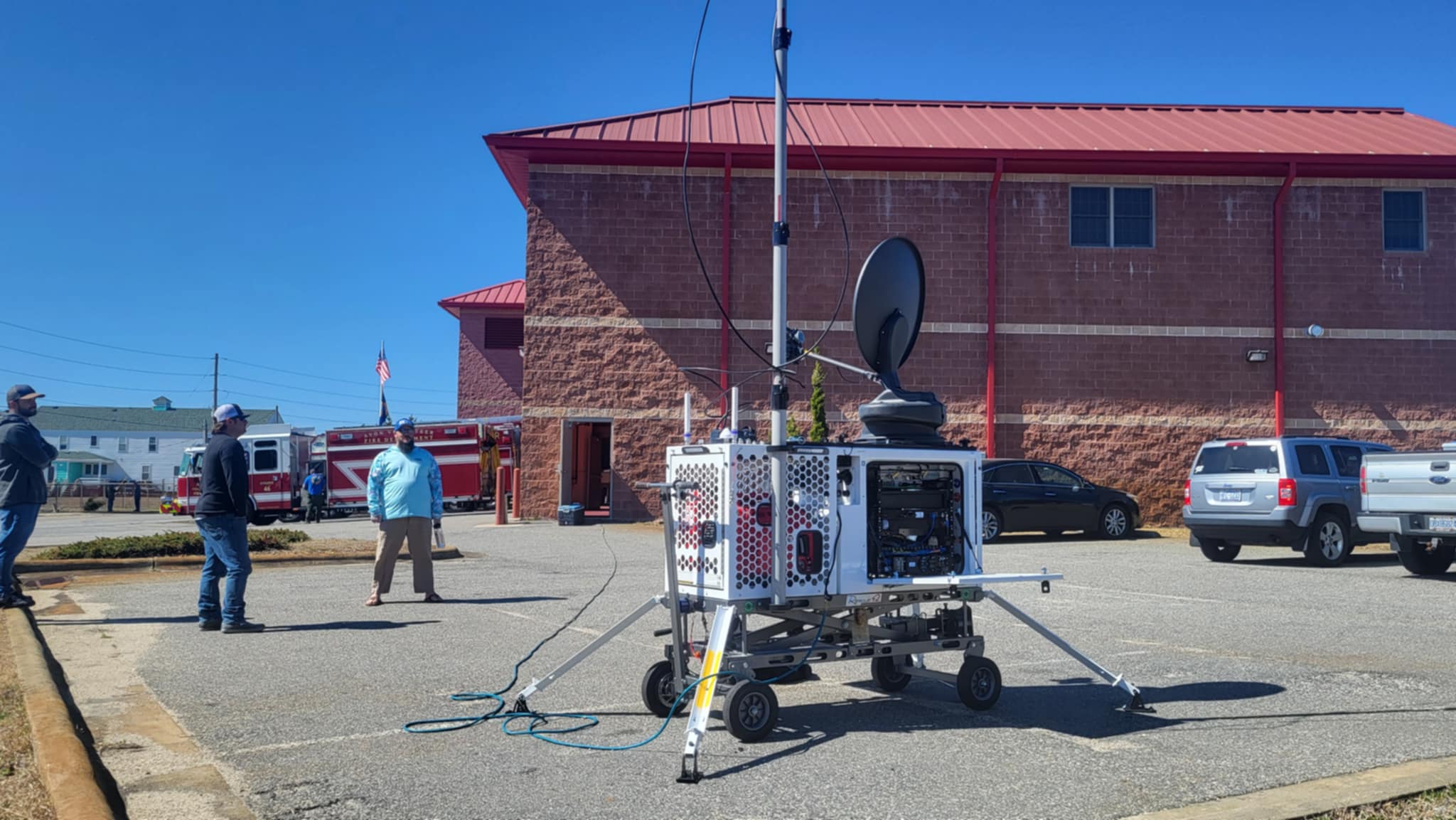River Otters Make a Splash at Pea Island National Wildlife Refuge
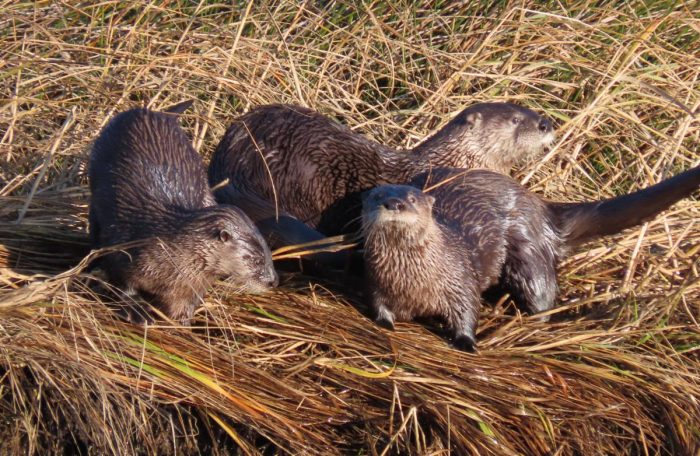
The Pea Island National Wildlife Refuge may be best known for its thousands of migratory birds that winter on the Outer Banks, but the sprawling refuge that consists of 5,823 acres of land and 25,700 acres of water is home to a number of non-feathered residents as well.
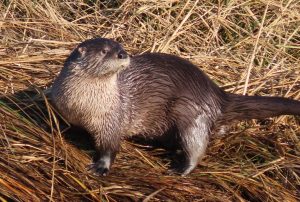
A romp of North American river otters were recently spotted within the Pea Island National Wildlife Refuge, with photos captured by longtime volunteer, bird walk leader, and photographer Karen Lebing.
Otters move easily through water, powered by a muscular tail and webbed feet. They also move well on land, and their diet consists of turtles, crayfish, frogs, fish and a variety of amphibians, which makes Pea Island a perfect spot for the others to frolic – and dine – along the Outer Banks.
Expanding for 13 miles on the northern end of Hatteras Island, the refuge is home to more than 365 species of animals on a year-round and/or temporary basis. Of the species within the refuge, 315 are birds, 34 are fish, 32 are reptiles and amphibians, 21 are terrestrial mammals, 8 are marine mammals, and 20 are other aquatic organisms.
With the winter in full swing, and many wintering waterfowl still flocking to the refuge, it’s an ideal time to make a trip to this wild Hatteras Island destination to see what surprise visitors may make an appearance.
How to Visit:
A good starting point to explore the refuge is the Pea Island National Wildlife Refuge Visitors Center, which connects with the North Pond Wildlife Trail, immediately behind the parking area.
Wildlife trails within the refuge are open year-round during daylight hours, and are fully disabled-accessible. Neither pets nor bicycles are allowed on walking trails, and more information can be found at https://www.fws.gov/refuge/pea_island/visit/visitor_activities/wildlife_trails.html.
For more information on happenings within the Pea Island National Wildlife Refuge and beyond, visit https://www.facebook.com/USFWS.NC.






